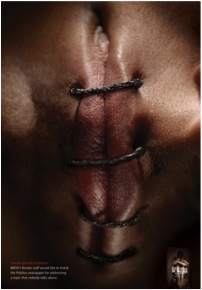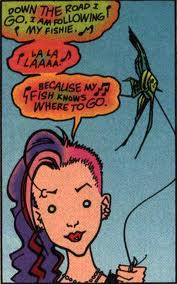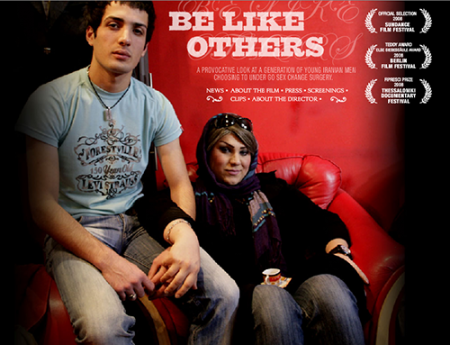Serendip is an independent site partnering with faculty at multiple colleges and universities around the world. Happy exploring!
Critical Feminist Studies Web Paper 2
A Look into Language
When someone mentioned in class that language was a feminist issue, I was so curious as to how. Beyond perhaps certain words ending in "man," I couldn't think of a way that language could be sexist. "'The english language is sexist in so far as it relegates women to a secondary and inferior lace in society'" (Spender 15). Language is the way that you communicate with others and express yourself, if that is inherently male, then how are women expected to express themselves? As we saw in The Book of Salt, it was difficult for Bìhn to progress further in his community because of the language barrier. He doesn't have the tools to gain social capital. He lacks the ability to speak in a certain way that will gain him a higher position in life.
WHAT IS A FEMINIST LANGUAGE
Female Genital Mutilation
Rebecca Sheriff
Female Genital Mutilation

Female genital mutilation (FGM), also known as female genital cutting is a
practice that has been going on for thousands of years based in northern Africa, the
Middle East, and parts of south Asia. Although there are claims that FMG is done for
religious reasons, there are no passages in the Koran, Bible, or Torah supporting FGM.
Because FGM has no health benefits, but instead serious health risks, including death, the
World Health Organization (WHO), Human Rights Watch, and countless other
organizations are trying to put an end to it. Many countries including western nations that
have immigrants from the main countries of FGM , have made FGM illegal. Several
politicians and activists have proposed implementing mandatory gynecological exams in
elementary schools for at risk students, but this has been rejected. The governments of
these countries who have outlawed FGM are working with many organizations like
UNICEF, Amnesty International, and WHO to take preventative measures, which mainly
consist of spreading education on the affects of FGM.
Female genital mutilation is classified into four groups. Type 1 is the excision of
the clitoral hood, usually as well as the clitoris. Type 2 is the excision of the clitoris and
In the defense of language
The 1970s saw the emergence of a new form of feminism in France, known as l’ecriture feminine, or the writing of women. This form was introduced by French feminists such as Monique Wittig, Luce Irigaray, Hélène Cixous and Julia Kristeva, among others[1]. These influential writers and feminists asserted that traditional writing centered on the male experience and was therefore phallocentric. This phallocentricity essentially either forced women to view the world through a male perspective in their language use, or subjugated them to silence[2]. The introduction of l‘ecriture feminine’ was meant to give a voice to the female experience and allow women to express their unique, non-male experiences and selves. As society has marginalized women and their experiences, language has been used as a tool of institutionalized oppression and even furthered it[3]. However, language in itself is an organic, and even inherently feminist form of communication.

just speak nearby/working towards ideas
Initially, I thought about feminism across different geographic locations as global feminism, as a feminism rooted in nations, defined and given flavor by the nation as a whole. That is, thinking about American feminism and Indian feminism and Ghanaian feminism and French Feminism. But then, that is SO American-centric of me. When I try to think of a certain American feminism, it’s impossible. Just to think of Bryn Mawr feminism strikes me as impossible. And I’m not trying to suggest that we’re all special feminist snowflakes, or that there is not sense of shared feminist thought or identity. But our shorthand, our labeling of feminisms as rooted in some national identity/location/region can have the possibility of flattening and erasing nuance from how feminists express themselves in a variety of contexts.

Is There Room for Feminism in Global Economics?

Watch Who’s Counting?: Marilyn Waring on Sex, Lies, and Economics Here :
http://www.nfb.ca/film/whos_counting
At the spectacle of rapidly expanding, nation interlacing sphere of globalism, the concept of an inclusive worldwide economy hardly seems like a digestible one. According to Marilyn Waring, however, because it specifically seeks not to be.
About Waring— 

Feminism in SlutWalk

Feminism of SlutWalk
SlutWalk is a protest event that began in April of 2011 in Toronto to express freedom of expression and anger at double standards. It has since expanded to other cities including New York and Chicago. SlutWalk Toronto was originally spurred by a Toronto police officer who suggested that “women should avoid dressing like sluts in order not to be victimized.” This made a lot of people angry.
SlutWalk Toronto’s website explains that this statement is wrong and hurtful for many reasons. Sexual assault is a serious crime and has nothing to do with the clothing a woman wears. No woman is “asking for it” when she wears a blouse that shows cleavage or when she wears sky-high platform pumps. By placing blame on the victim, it makes her less likely to report it to authorities or seek professional help.

What's That Word For When You Have To Break It To Find It?
“Change. Change. Change. Change…change. Change. Chaaange. When you say words a lot they don’t mean anything. Or maybe they don’t mean anything anyway, and we just think they do.” -Delirium

" Fish live next to the bodies of dead pirates."- Kathy Acker
Since our discussion of Persepolis as a story of a young woman attempting to find her own identity among great destruction and trauma, and our subsequent discussions of feminism in relation to graphic narratives, I’ve been stuck on the idea that Neil Gaiman’s Sandman character Delirium might be a nice counterpart to Marjane Satrapi. Delirium, one of seven characters who are the embodiment of earthy concepts, is, like Satrapi, a child trying to find her way in the world. Also like Satrapi, she is the product of some great trauma, though this trauma is never quite defined. However, the resemblance ends there.

Be Like Others: An Issue Transcending Borders
Of the many riveting cultural situations that we have only begun to explore in class so far, one of the most striking were those of men and women born in the body of a sex that they do not identify with and how society responds to them as transgendered individuals. As I approach the question of feminism and how it differs geographically, I want to take a look into the transsexual community in America and compare it to that in Iran, specifically after having watched the film “Be Like Others”.
In the United States, transgender issues are rising to the forefront – in films such as “Boys Don’t Cry” and “Transamerica” and in news stories about transgendered children and the increase in support for these individuals and their families. Coming across the color photography project My Right Self was an experience that provided me with a more personal and moving account of what it is like to be transgendered and hopes to do the same for the public.
The website is an informative project while the photographs are intended to be a traveling show and part of advocacy to benefit the healthcare community, those who are transgendered and their loved ones. The website’s eager invitation to use photography as a vehicle to initiate conversation shows that part of America, even if a slim one; is becoming more accepting and actually attempting to understand this point of view on some level.

Leave the Walls Standing
Gertrude Stein and Gayatri Spivak are two very different women; Spivak was born in India yet completed most of her studies in the United States, and Stein was born in the United States but lived most of her life in France. However, they are both considered to be feminist authors, and they share the opinion that we cannot make ourselves too easy to understand for fear of letting ourselves be used for didactic purposes. The two accomplish this in different ways, Spivak by emphasizing the depth of our lack of understanding of those different from us, and Stein by limiting our understanding to the surface. While both of these approaches are feminist, Spivak’s approach ultimately gives greater agency to women who have been marginalized.


